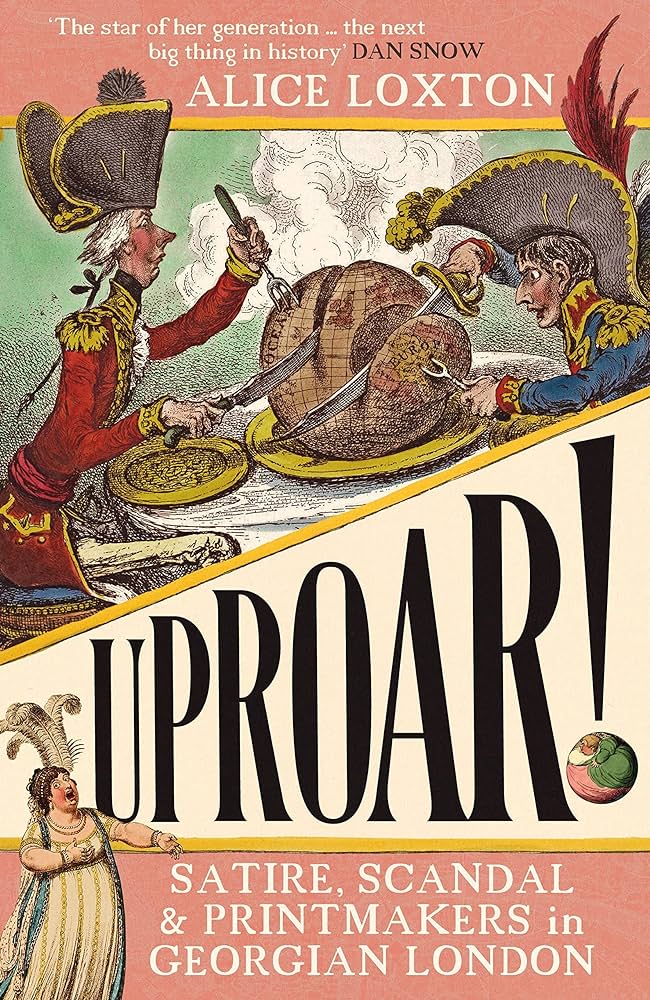
RATING: VERY GOOD, INFORMATIVE AND INTERESTING
The last part of the book is about the end of an era as the main figures in the field gradually died.
Continue reading

RATING: VERY GOOD, INFORMATIVE AND INTERESTING
The last part of the book is about the end of an era as the main figures in the field gradually died.
Continue reading
The book describes how Nelson was revered during the events for his funeral. He lay in state for three days in the Painted Hall of Greenwich Hospital. The lead coffin was then placed inside a wooden one, made from the mast of L’Orient, which had been salvaged after the Battle of the Nile. On 9 January, a funeral procession consisting of 32 admirals, over a hundred captains, and an escort of 10,000 soldiers took the coffin from the Admiralty to St Paul’s Cathedral. After a four-hour service, he was interred within a crypt, in a sarcophagus originally carved for Cardinal Wolsey.
Continue reading
George Canning was a Member of Parliament who longed to be in Gillray’s caricatures. George Canning (11 April 1770 – 8 August 1827) was a British Tory statesman. He held various senior cabinet positions under numerous prime ministers, including two important terms as Foreign Secretary, finally becoming Prime Minister of the United Kingdom for the last 119 days of his life, from April to August 1827.
Continue reading
During the French Revolution a group cropped up called John Reeves’ Association for preserving liberty against Republicans. John Reeves (20 November 1752 – 7 August 1829) was a legal historian, civil servant, British magistrate, conservative activist. In 1792 he founded the Association for Preserving Liberty and Property against Republicans and Levellers, for the purpose suppressing the “seditious publications” authored by British supporters of the French Revolution—most famously, Thomas Paine’s Rights of Man.
Continue reading
In 1790 Captain William Bligh returned to England after a 3-year expedition. He was the captain of the Bounty, and the disaster he came to suffer was known as the Mutiny on the Bounty. The mutiny on the Royal Navy vessel HMS Bounty occurred in the South Pacific Ocean on 28 April 1789. Disaffected crewmen, led by acting-Lieutenant Fletcher Christian, seized control of the ship from their captain, Lieutenant William Bligh, and set him and eighteen loyalists adrift in the ship’s open launch. The mutineers variously settled on Tahiti or on Pitcairn Island. Bligh navigated more than 3,500 nautical miles ( in the launch to reach safety and began the process of bringing the mutineers to justice.
Continue reading
One political figure who was central at the time was Charles James Fox, who was the candidate as Prime Minister in the election of 1784. Charles James Fox (24 January 1749 – 13 September 1806) was a prominent British Whig statesman whose parliamentary career spanned 38 years of the late 18th and early 19th centuries. He was the arch-rival of the Tory politician William Pitt the Younger. He was the object of many caricaturists like Rowlandson.
Continue reading
At the time William Hogarth (10 November 1697 – 26 October 1764) stood against the art of caricature. Hogarth was an artist who showed London’s social problems in his paintings.
Continue reading
First Published: 2023
This is a non-fiction book about satire and caricature in England in the eighteenth century. This book has been a present, and I have to say that I follow Alice Loxton online, and I love her videos about British history.
Continue readingSusan Elliot Wright Author Website
Official website and journal
Past and Future Worlds with Humor and Heart
Award-winning author and keen traveller
crime writer
Thoughts and notes about the books I am reading. My entries are not book reviews but just my personal thoughts and opinions about what I'm reading at the moment. The entries obviously contain SPOILERS.
I am a novelist and screenwriter. New novel 'Good Girls Don't Die' out now!
A great WordPress.com site